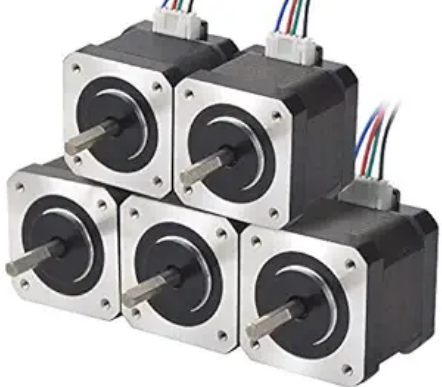Types of Stepper Motors
There are currently three general types of stepper motors.
Variable Reluctance (VR)
Permanent Magnet (PM)
Hybrid
Variable reluctance step motors have teeth on the rotor and stator, but no magnet. Therefore it has no detent torque. The Permanent Magnet has a magnet for a rotor but no teeth. Usually, the PM magnet has crude step angles, but it does have detent torque.
Hybrid stepper motors combine the magnet from the permanent magnet and the teeth from the variable reluctance motors. The magnet is axially magnetized meaning in the diagram to the right the top half is a north pole and the bottom half is a south pole. On the magnet are two toothed rotor cups with 50 teeth. The two cups are displaced 3.6° so that if we look down the rotor between two teeth on the north pole cup, we would see one tooth on the south pole cup directly in the middle.
These motors are two phase construction, with 4 poles per phase. The poles 90° apart from one another make up each phase. Each phase is wound so that the pole 180° is the same polarity, while those 90° apart are the opposite polarity. If the current in that phase were reversed, so would the polarity. This means that we can make any stator pole either a north pole or a south pole.







































